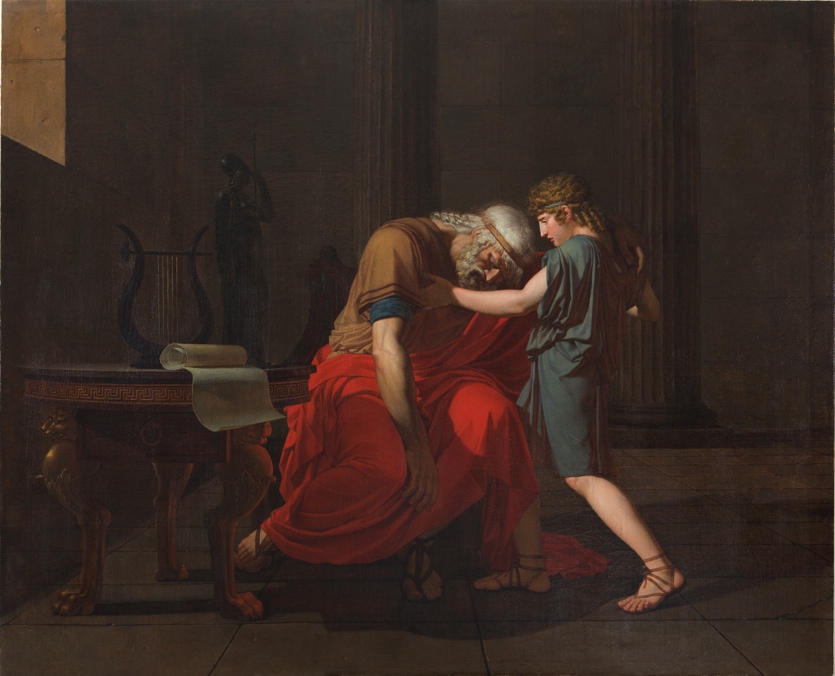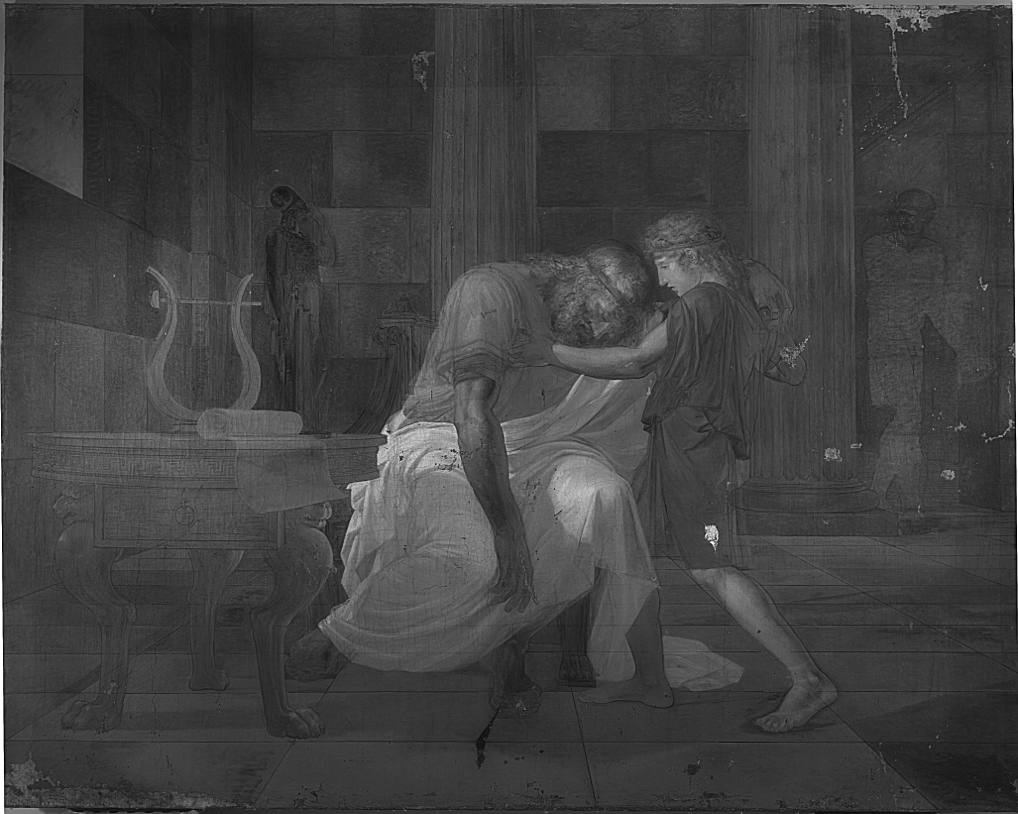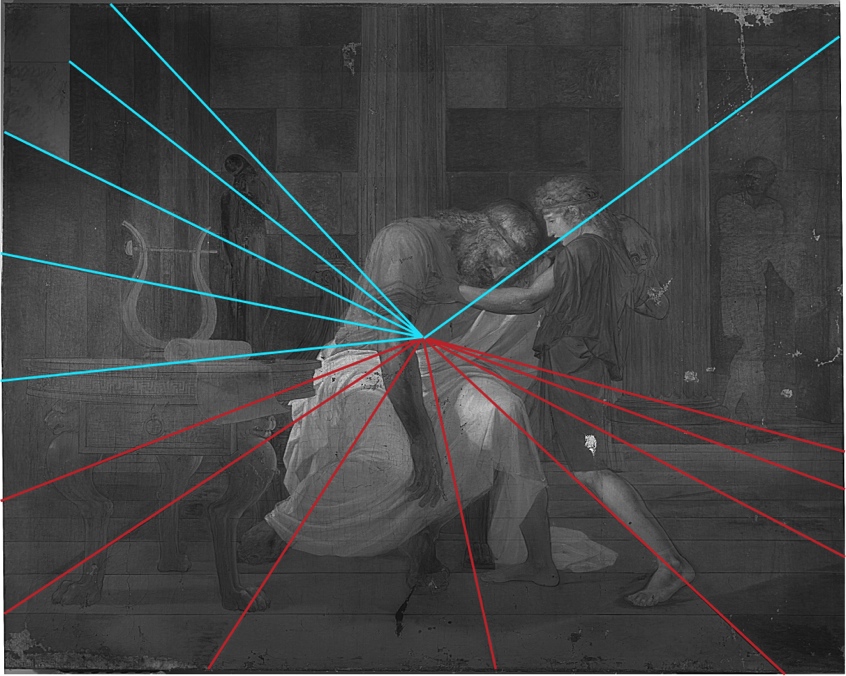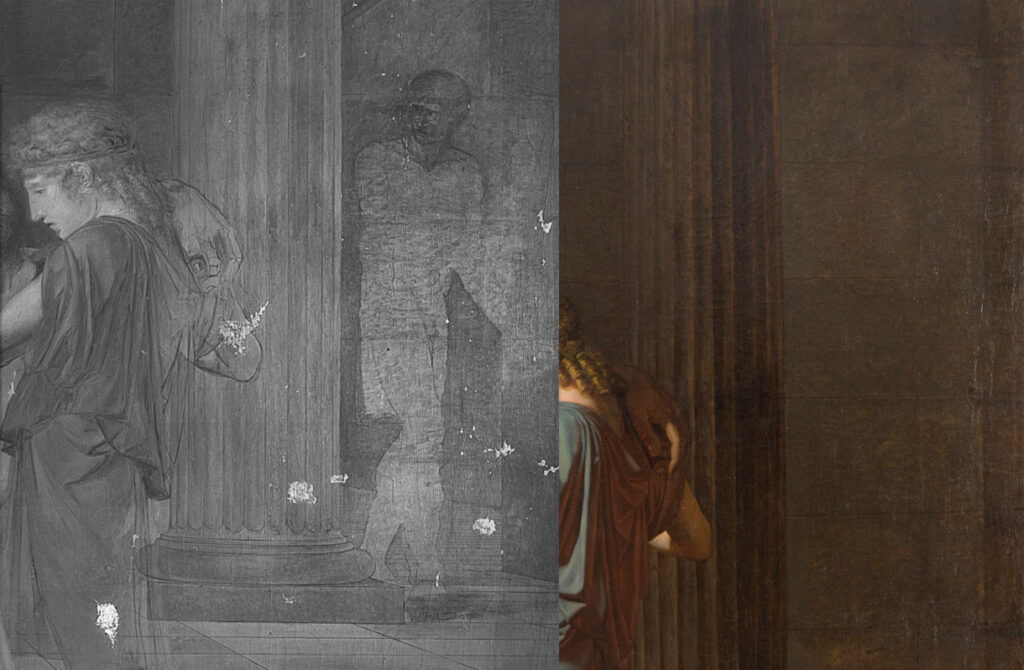
By Lewis Brown
Attributed to Pierre-Claude Desmarets, around 1800, oil on canvas
Author/s: Arcanes
Due to the chemical nature of certain materials used by artists, infrared rays can penetrate the various layers of paint and, in turn, are more or less reflected. The reflection or absorption pattern is recorded by the infrared camera, producing a reflectogram.
Infrared reflectography allows for a non-invasive study of the first stage of creation of painting, called the underdrawing. In this work, the reflectogram shows clearly the detailed underdrawing, executed in a carbon-based material such as graphite, as would have been customary for this time-period in France.
The painting is a remarkable example of the wealth of information that may be gathered by the infrared reflectography cameras. Here, the artist planned carefully the execution of his composition by establishing a pictorial structure by means of linear perspective lines. These lines are essential to the construction of the narrative as they converge towards a point, called vanishing point, which focuses the viewer’s attention towards a chosen subject.
Grid lines are also revealed by the infrared reflectogram. Those allow for a rigorous design of the forms, in the manner of early 19th century French Neo-classicism.
Referred to as pentimenti, changes made during the painting process are historical witnesses of artists’ practices. Changes can be as striking as removing a figure. In this finished composition, the two figures stand in the centre. However the infrared reflectogram clearly indicates that a third figure had initially been planned out. The sketch of his now hidden silhouette reveals an important stage in the artist’s thought process.
Changes can also be as subtle as refining forms. These adjustments often testify to the artistic sensitivity of the painter.
The reflectograms produced allowed for precious insights into not only an artists’ materials and techniques, but also into the context of the Neo-classic production in France.


